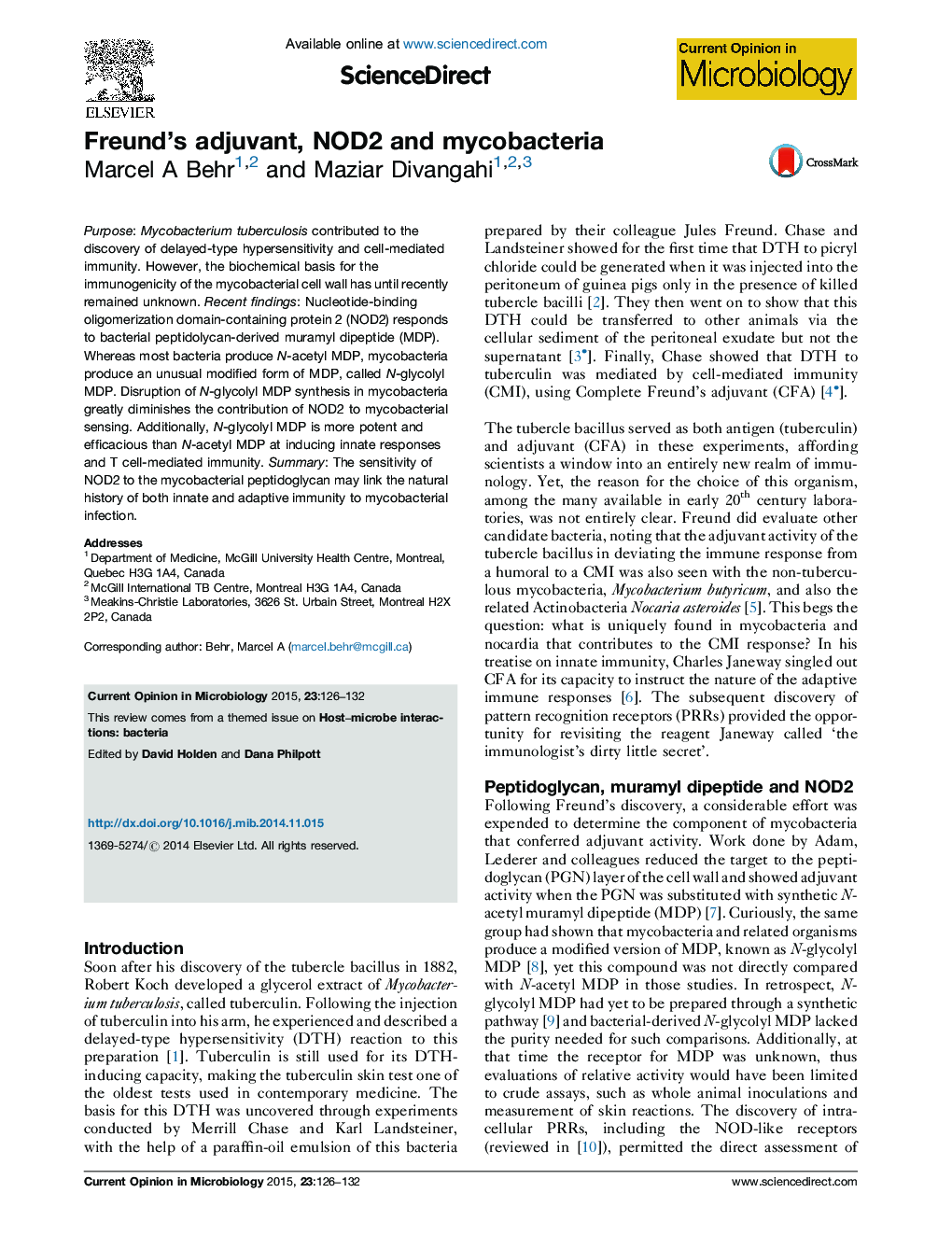| Article ID | Journal | Published Year | Pages | File Type |
|---|---|---|---|---|
| 6131956 | Current Opinion in Microbiology | 2015 | 7 Pages |
Abstract
Purpose: Mycobacterium tuberculosis contributed to the discovery of delayed-type hypersensitivity and cell-mediated immunity. However, the biochemical basis for the immunogenicity of the mycobacterial cell wall has until recently remained unknown. Recent findings: Nucleotide-binding oligomerization domain-containing protein 2 (NOD2) responds to bacterial peptidolycan-derived muramyl dipeptide (MDP). Whereas most bacteria produce N-acetyl MDP, mycobacteria produce an unusual modified form of MDP, called N-glycolyl MDP. Disruption of N-glycolyl MDP synthesis in mycobacteria greatly diminishes the contribution of NOD2 to mycobacterial sensing. Additionally, N-glycolyl MDP is more potent and efficacious than N-acetyl MDP at inducing innate responses and T cell-mediated immunity. Summary: The sensitivity of NOD2 to the mycobacterial peptidoglycan may link the natural history of both innate and adaptive immunity to mycobacterial infection.
Related Topics
Life Sciences
Immunology and Microbiology
Microbiology
Authors
Marcel A Behr, Maziar Divangahi,
